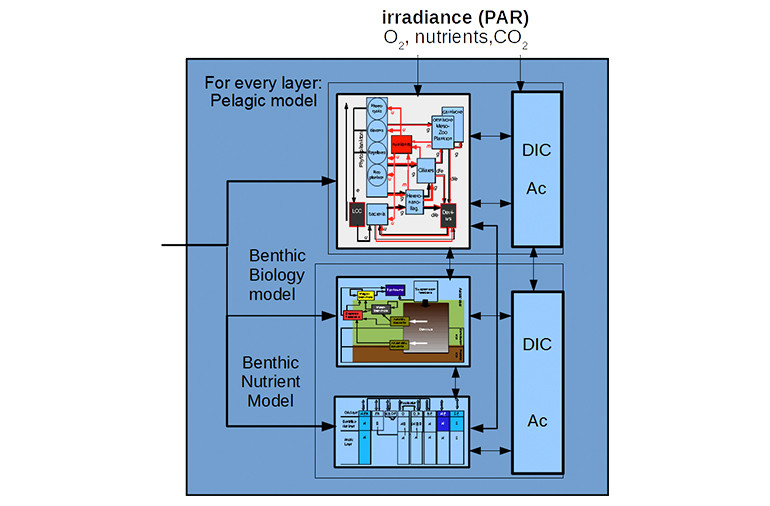Ecosystem model
ERSEM uses a functional group approach and contains 6 phytoplankton functional groups, 4 zooplankton functional groups and 5 benthic functional groups. (Meiobenthos, deposit-feeding macrobenthos, filter-feeding macrobenthos, benthic predators and epibenthic fauna such as shrimp). Bacterioplankton and benthic bacteria, both aerobic and anaerobic, are also included.

The sediment with the benthic biolgy is subdivided into three layers: an oxic layer, a denitrification layer and an anoxic layer. The three layers have a fixed total thickness of 30 cm. The oxic and denitrification layers have a variable thickness, calculated by the model, while the remaining part is therefore the anoxic layer.
The light climate is determined by the vertical distribution and abundance of phytoplankton and (in)organic suspended matter. Phytoplankton use special pigments, chlorophylls, to capture and transform solar energy inorganic carbon into organic carbon biomass from carbon dioxide in the water (primary production). Both algal pigments and suspended particulate matter absorb light: Together they determine the underwater light climate and consequently how far light penetrate into the water column. In ERSEM chlorophyll is a state variable and as such dynamically modelled. By doing this we can account for the different light sensitivities of different algal groups and their different dynamics in time and space.